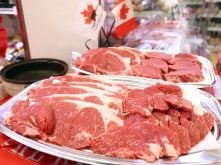RED DEER – An editorial in the Holstein Journal in 1939 dismissed artificial insemination as an interesting concept but something that would be used only in exceptional cases.
“I have heard exactly the same sentence about genomics,” said Doug Blair, who has been involved in AI and embryo transfers for most of his career in the dairy business.
He has also sold high performing cattle around the world based on the best genetic selection knowledge available.
Read Also

More factors affecting winter weather
When you combine a weak La Niña, early Siberian snow, and a warm northern Pacific, it’s easy to see why long-range winter forecasting is so complex.
Genomics is a new tool to accelerate bull and heifer selection and is proving superior to traditional methods.
Blair tested three young full brothers on his farm near Cochrane, Alta., using the traditional rating system. All three received high marks. As an experienced dairy producer, he visually assessed the three and selected one as the best overall.
However, a genomic test showed wide differences in traits such as fat, milk production and body conformation. The result is that two of the bulls will go to the AI stud program, but the one he picked won’t be one of them.
“Looking at bulls is probably the most unreliable estimate of their breeding value that was ever developed,” Blair told the Western Dairy Seminar in Red Deer March 12.
A system of evaluating dairy animals was developed more than 70 years ago, based on an individual’s progeny and production records.
Dairy producers rated young animals by taking the average of the sire and dam performances, but there was no way to know how different brothers might be.
“We just assumed they were all the same,” he said.
Today, genetic evaluation of dairy cattle can be combined with traditional data for a more reliable predictor of the genetic merit of young dairy animals.
“All genetic evaluations are predictions and we should always keep that in mind,” Blair said.
“We are trying to refine our predictions of what the genetic evaluation is telling us.”
With genomics, a young female can be assessed and more will be known about its genetic potential than if it had had two calves, he said.
However, most research will likely focus on bulls because a dairy bull may sire 10,000 daughters, while a single cow will never have enough progeny to build a lot of data.















